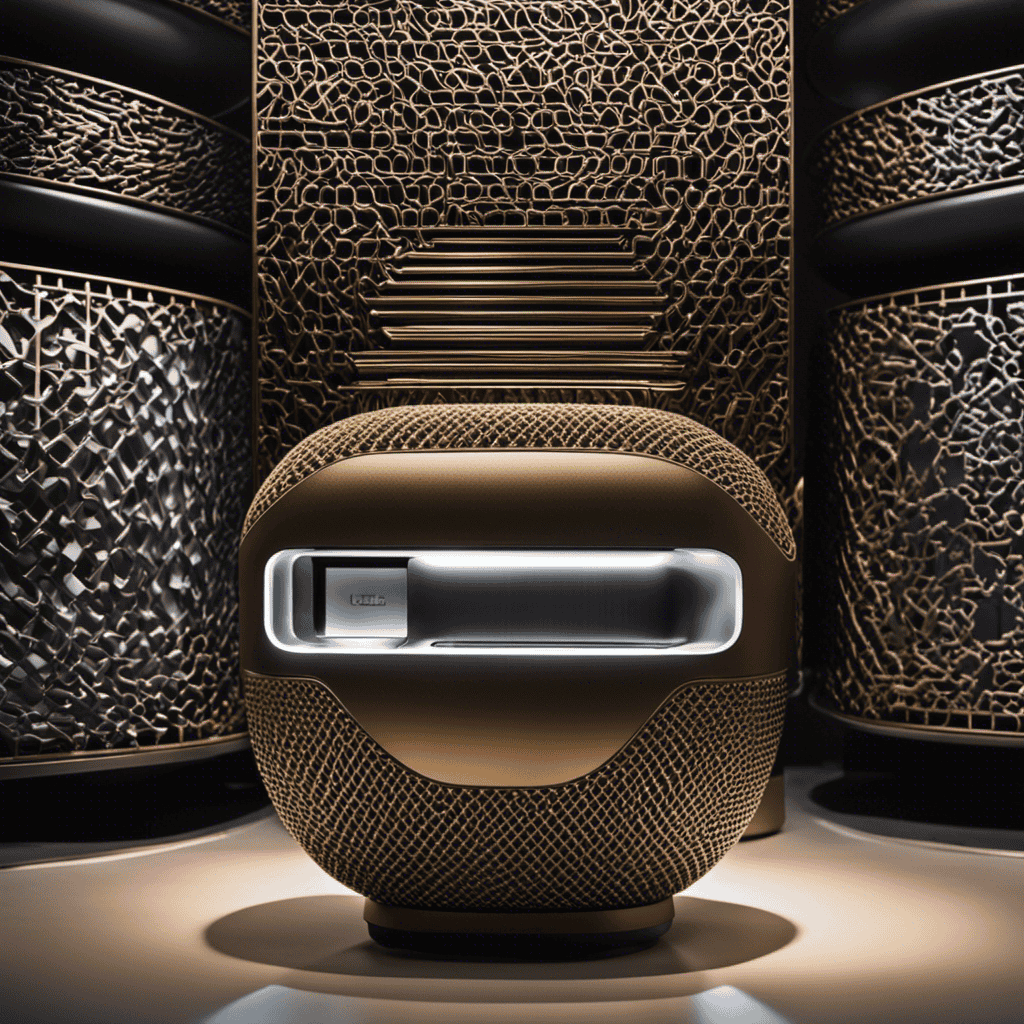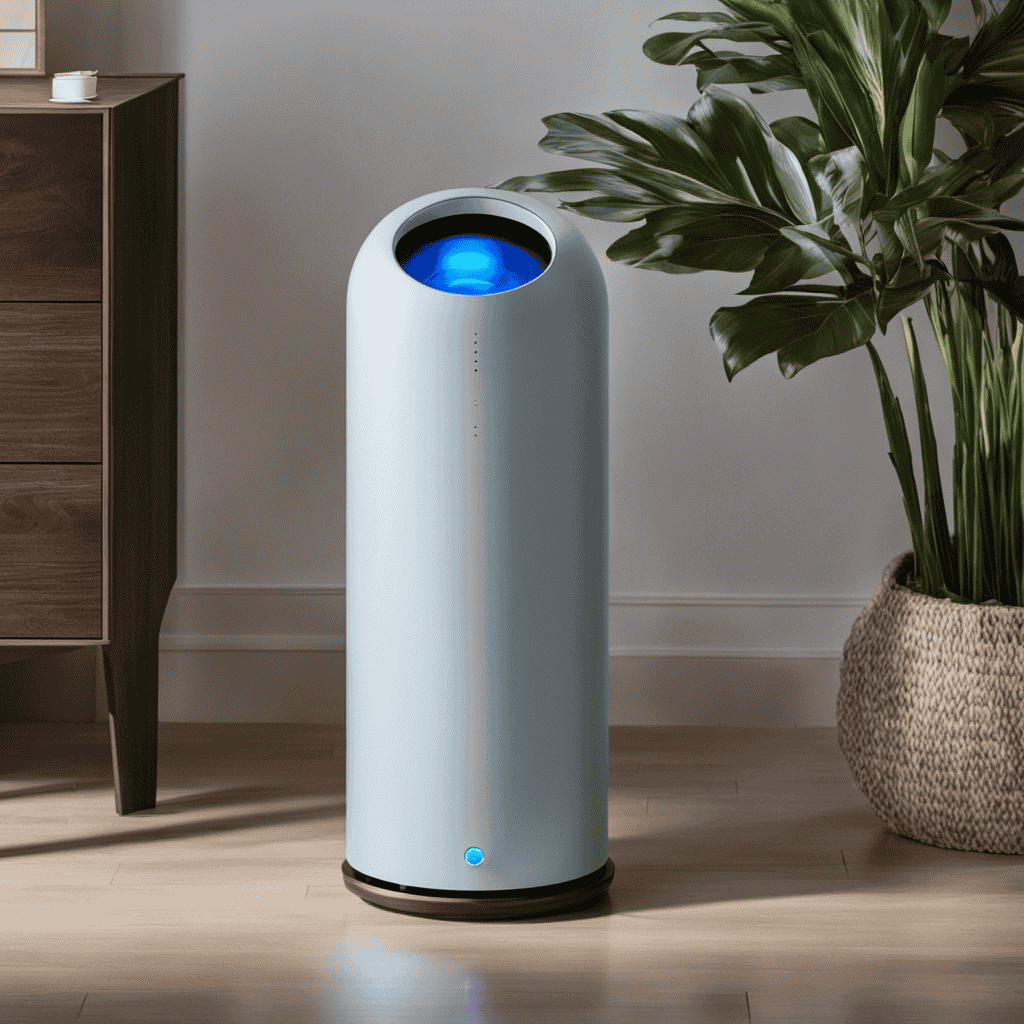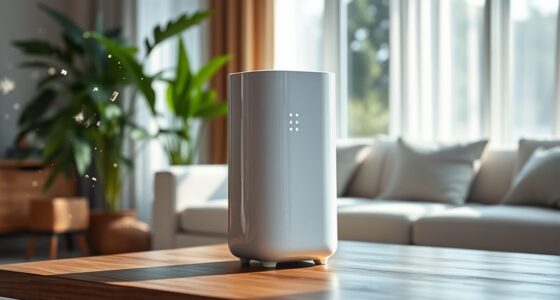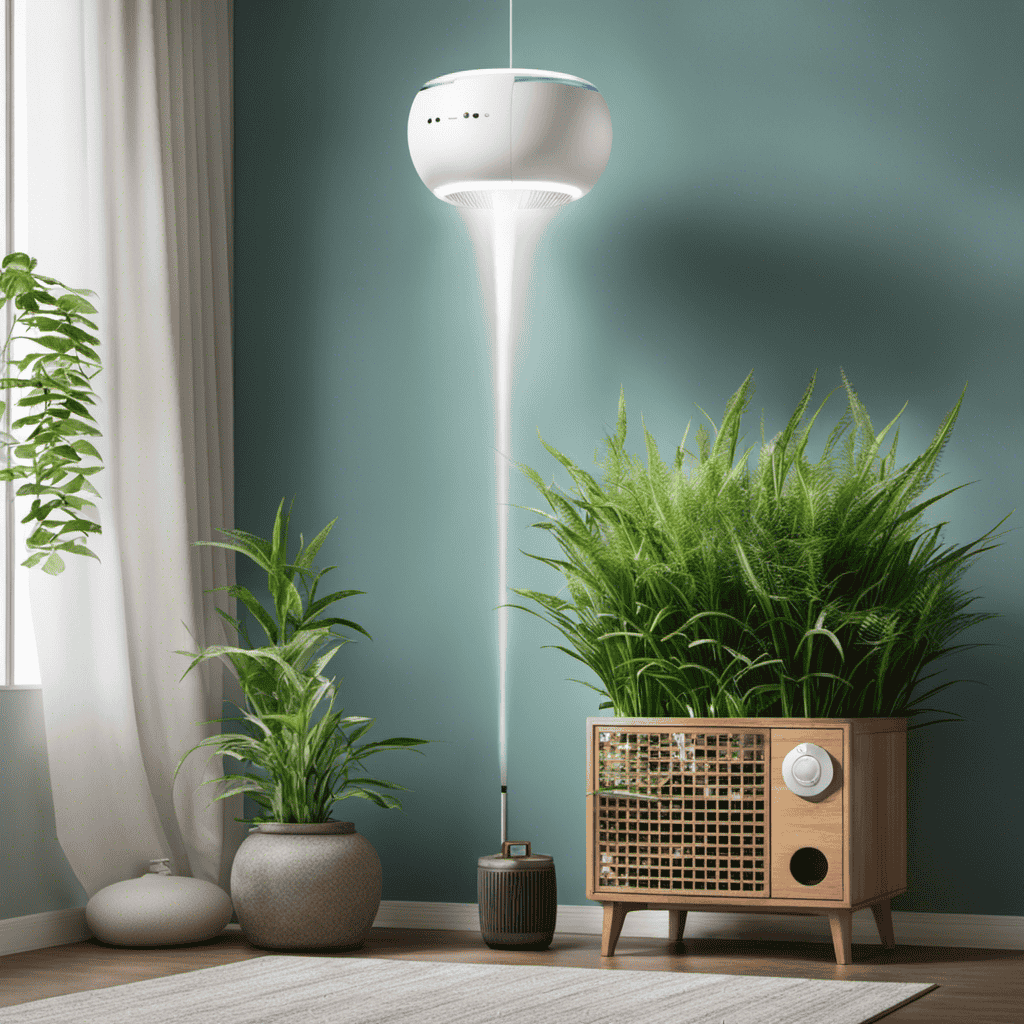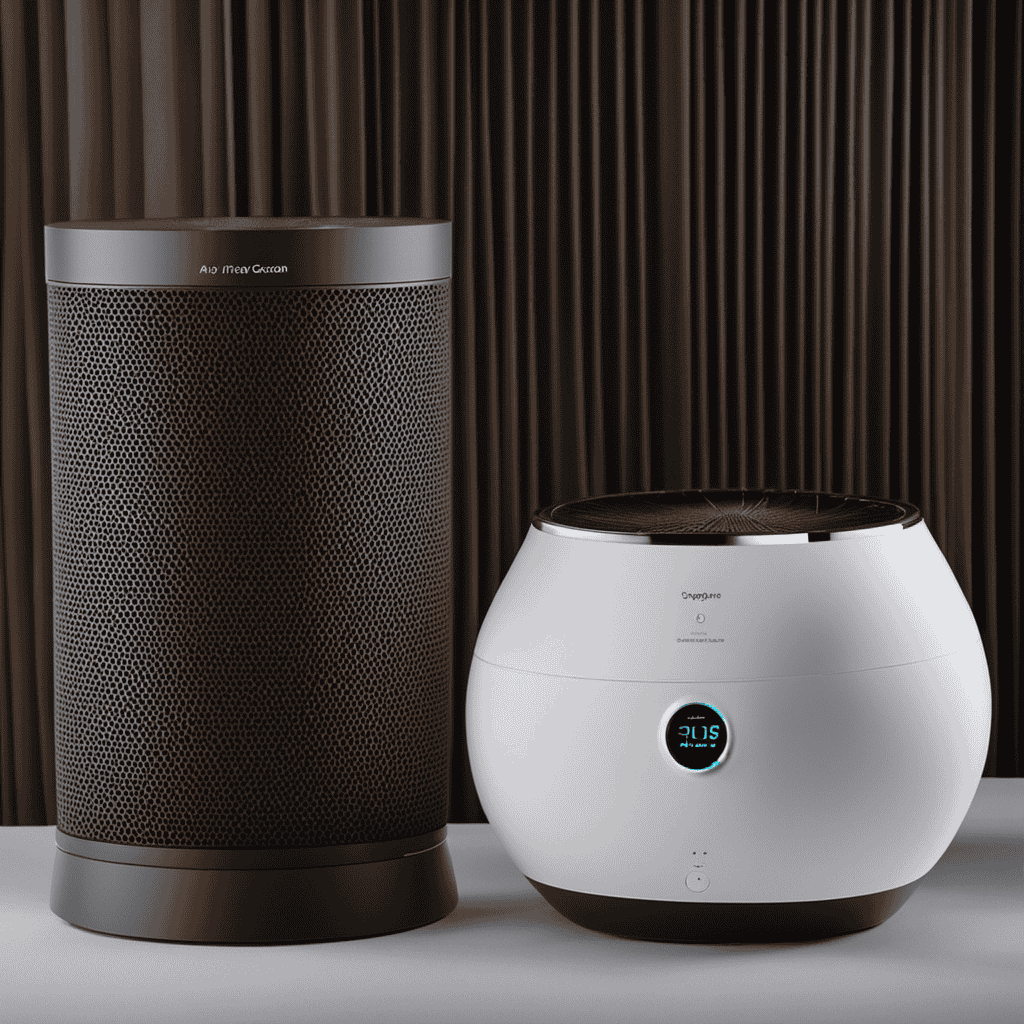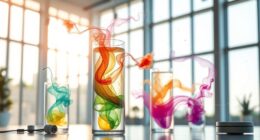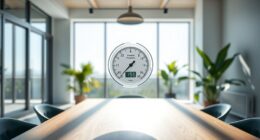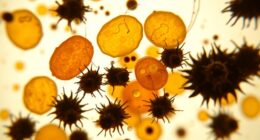Were you aware that the air inside can be up to five times more contaminated than the air outside? This is precisely why it’s essential to have a dependable air purifier to ensure the air in your home remains pure and conducive to good health.
In this article, I will delve into the world of Idyllis air purifiers and unravel the mysteries behind the terms ‘HEPA’ and ‘carbon.’ We will explore the importance of HEPA filtration in trapping particles and allergens, as well as the role of activated carbon filters in removing odors.
So, let’s dive in and discover what HEPA and carbon really mean on Idyllis air purifiers.
Key Takeaways
- HEPA filters in Idyllis Air Purifiers are designed to trap and remove small particles and allergens, improving indoor air quality.
- Activated carbon filters in Idyllis Air Purifiers are effective in adsorbing gaseous pollutants, such as volatile organic compounds (VOCs) and odors.
- Regular filter replacement and maintenance are essential to ensure optimal air purification efficiency and extend the lifespan of the air purifier.
- The combination of both HEPA and carbon filters in Idyllis Air Purifiers provides comprehensive air purification by addressing both particle and odor removal.
The Importance of HEPA Filtration in Air Purifiers
HEPA filtration is essential in air purifiers because it effectively captures and removes small particles and allergens from the air. HEPA stands for High Efficiency Particulate Air and refers to a type of filter that meets stringent standards set by the Department of Energy.
These filters are made up of a fine mesh of fibers that can trap particles as small as 0.3 microns in size, including dust, pollen, pet dander, and mold spores. The efficiency of a HEPA filter is measured by its ability to remove these particles from the air.
When it comes to air purifiers, it is important to consider the HEPA filter efficiency, which indicates how well the filter can clean the air. Additionally, the longevity of the carbon filter is another factor to consider in air purifiers, as it determines the lifespan of the filter and its ability to remove odors and harmful gases.
Understanding the importance of HEPA filtration sets the stage for exploring the role of activated carbon filters in Idyllis air purifiers.
Understanding Activated Carbon Filters in Idyllis Air Purifiers
When it comes to air purifiers, understanding the effectiveness of carbon filters is crucial.
Activated carbon filters are designed to remove various gaseous pollutants from the air, such as volatile organic compounds (VOCs), odors, and harmful chemicals.
The benefits of activated carbon filters include improved indoor air quality, reduced exposure to toxins, and the ability to neutralize unpleasant smells.
Carbon Filter Effectiveness
The carbon filter in the Idyllis air purifier is effective at removing odors and chemicals from the air. Activated carbon filters have a high surface area that allows them to effectively adsorb volatile organic compounds (VOCs) and other pollutants.
The lifespan of a carbon filter depends on various factors such as the air quality, usage, and maintenance. Generally, carbon filters need to be replaced every 6 to 12 months to maintain their effectiveness.
Regularly replacing the carbon filter ensures that it continues to efficiently remove VOCs and other chemicals from the air, promoting a healthier indoor environment.
In the subsequent section, we will explore the benefits of using activated carbon filters in Idyllis air purifiers and how they can enhance the overall air purification process.
Benefits of Activated Carbon?
Activated carbon filters are beneficial because they effectively remove odors and chemicals from the air. The porous structure of activated carbon allows it to trap and adsorb a wide range of volatile organic compounds (VOCs) and other pollutants present in the air. This is due to the process of adsorption, where the pollutants are attracted to the surface of the carbon particles and bound to them.
Activated carbon is commonly used in air purifiers, where it acts as a powerful filter to improve indoor air quality. Additionally, activated carbon is also used for water purification. It can effectively remove impurities, such as chlorine, volatile organic compounds, and sediment from drinking water, making it safer and more pleasant to consume.
The versatility and effectiveness of activated carbon make it a valuable tool for improving both air and water quality.
How HEPA Filters Trap Particles and Allergens
You can understand how HEPA filters trap particles and allergens. Here are three key points to consider about the methods of air purification and the common allergens that HEPA filters target:
-
HEPA filters work by using a dense, fibrous material to capture tiny particles and allergens in the air. These filters are designed to capture particles as small as 0.3 microns, including dust mites, pollen, pet dander, and mold spores.
-
The fibrous material in HEPA filters creates a maze-like structure that forces air to pass through, effectively trapping particles and allergens. This filtration process ensures that the purified air released back into the environment is free from these harmful substances.
-
HEPA filters are highly efficient at removing allergens from the air, making them an essential component in air purifiers for individuals with allergies or respiratory conditions. By removing common allergens, HEPA filters help create a cleaner and healthier indoor environment.
The Role of Activated Carbon Filters in Odor Removal
Now that we have explored how HEPA filters effectively trap particles and allergens, let’s delve into the role of activated carbon filters in odor removal.
Activated carbon filters, also known as charcoal filters, are designed to target and eliminate odors from the air. The science behind odor absorption lies in the unique properties of activated carbon. These filters are made from a highly porous material that has been treated to increase its surface area.
This increased surface area allows the carbon to adsorb odor-causing molecules, trapping them within its microscopic pores. The activated carbon acts as a sponge, attracting and holding onto the odorous compounds, effectively removing them from the air.
Compared to charcoal filters, activated carbon filters have a larger surface area, which enhances their odor-absorbing capabilities. Therefore, when it comes to combating unwanted smells, activated carbon filters are the superior choice.
Comparing HEPA and Carbon Filters for Air Purification
Let’s compare the effectiveness of HEPA filters and activated carbon filters for purifying the air. When it comes to air purifiers, these two types of filters play a crucial role in removing different types of contaminants. Here’s what you need to know:
-
HEPA filters: High-Efficiency Particulate Air (HEPA) filters are designed to trap and remove small particles from the air. They are highly effective in capturing allergens, such as pollen, pet dander, and dust mites. HEPA filters can remove particles as small as 0.3 microns with an efficiency of 99.97%. This makes them ideal for individuals with allergies or asthma.
-
Activated carbon filters: These filters are excellent at removing odors, gases, and volatile organic compounds (VOCs) from the air. Activated carbon works by adsorbing these contaminants onto its porous surface. This process helps eliminate unpleasant smells caused by cooking, tobacco smoke, or chemical fumes. However, carbon filters are not as effective in removing particulate matter as HEPA filters.
-
Combined effectiveness: Some air purifiers come with a combination of both HEPA and activated carbon filters. This provides a comprehensive air purification solution by addressing both particle pollutants and odors/gases. By using both types of filters, the air purifier can effectively remove a wide range of contaminants, making it suitable for various indoor environments.
Tips for Maintaining HEPA and Carbon Filters in Idyllis Air Purifiers
In this discussion, I’ll be exploring the important aspects of maintaining HEPA and carbon filters in Idyllis air purifiers.
Firstly, let’s talk about the recommended filter replacement frequency. This is crucial for ensuring optimal air purification efficiency. Regularly replacing the filters is necessary to keep the air purifier working effectively. It’s generally recommended to replace the filters every 6-12 months, depending on the usage and air quality in your environment.
Secondly, let’s delve into the various cleaning techniques for these filters. Cleaning the filters is essential to remove accumulated dust, dirt, and other particles. To clean the filters, you’ll need to remove them from the air purifier and gently wash them with mild soap and water. Make sure to rinse them thoroughly and allow them to dry completely before reinstalling them.
Lastly, let’s highlight the numerous benefits of regular maintenance. Regularly maintaining your air purifier by replacing and cleaning the filters has a positive impact on its overall performance and longevity. It helps to maintain optimal air purification efficiency, ensuring that you’re breathing in clean and fresh air. Additionally, regular maintenance can also extend the lifespan of your air purifier, saving you money in the long run.
Overall, by following the recommended filter replacement frequency and cleaning techniques, you can ensure that your Idyllis air purifier continues to provide you with clean and healthy air.
Filter Replacement Frequency
To maintain optimal air quality, you should replace the filters in your Idyllis air purifier regularly, considering the HEPA and carbon filters. These filters play a crucial role in trapping and removing airborne particles and contaminants from your indoor air.
The lifespan of the filters depends on various factors, such as the air quality in your environment and the usage of the air purifier. Here are three key points to consider when replacing your filters:
-
Filter Replacement Schedule: It is recommended to replace the HEPA filter every 6 to 12 months and the carbon filter every 3 to 6 months to ensure the best air purification performance.
-
Monitor Filter Lifespan: Keep track of the filter’s lifespan by setting reminders or using the filter replacement indicator, if available, on your Idyllis air purifier.
-
Visual Inspection: Regularly inspect your filters for any signs of discoloration, damage, or clogging. If you notice a significant decrease in air purifier efficiency or an increase in odors, it may be time to replace the filters.
Cleaning Techniques for Filters
Regularly cleaning the filters in my Idyllis air purifier is essential for maintaining optimal air purification performance. There are various cleaning methods that can be used to extend the filter lifespan.
One effective method is vacuuming the filters with a brush attachment to remove large particles and debris. This should be done at least once a month.
For a deeper clean, the filters can be washed with warm water and a mild detergent. Gently scrubbing the filters will help remove any trapped dirt or dust. After washing, it is important to thoroughly dry the filters before reinstalling them in the air purifier.
Benefits of Regular Maintenance
Now that we have discussed the cleaning techniques for filters, let’s delve into the benefits of regular maintenance.
Maintaining your filters is crucial for prolonging their lifespan and ensuring optimal performance of your Idyllis air purifier. Here are three key benefits of regular filter maintenance:
-
Enhanced Air Quality: Regularly cleaning or replacing your filters removes accumulated dust, allergens, and pollutants from the air. This helps to maintain a healthier indoor environment and reduces the risk of respiratory issues.
-
Increased Efficiency: Clean filters allow the air purifier to operate at its maximum efficiency. When filters are clogged with debris, the airflow is restricted, making the purifier work harder and consume more energy. Regular maintenance ensures optimal airflow and energy efficiency.
-
Cost Savings: By regularly maintaining your filters, you can extend their lifespan, reducing the need for frequent replacements. This saves you money in the long run and ensures that your air purifier continues to work effectively.
Does the “Hepa” feature on the Fellowes Air Purifier have the same meaning as the “Hepa and Carbon” features on the Idyllis Air Purifier?
Yes, the “Hepa” feature on the Fellowes Air Purifier does not have the same meaning as the “Hepa and Carbon” features on the Idyllis Air Purifier. When it comes to fellowes air purifier filter change, the type and combination of filters can vary between different air purifier models.
Conclusion
In conclusion, it is crucial to understand the significance of HEPA and carbon filters in Idyllis air purifiers for maintaining a clean and healthy indoor environment.
The HEPA filtration system effectively traps particles and allergens, ensuring better air quality. This is important because it helps to reduce the risk of respiratory issues and allergies caused by airborne contaminants. By using a HEPA filter, you can have peace of mind knowing that the air you breathe is cleaner and healthier.
Additionally, the activated carbon filters play a vital role in eliminating unpleasant odors. These filters are designed to absorb and trap odorous molecules, such as those from cooking, pets, or smoke. By using a carbon filter, you can enjoy fresher and more pleasant-smelling air in your home.
By comparing the efficiency of HEPA and carbon filters, we can make informed decisions about the best air purification methods. Understanding their individual strengths and weaknesses can help us choose the right combination of filters for our specific needs.
It is important to note that regular maintenance is key to ensuring the longevity and effectiveness of these filters. Cleaning or replacing the filters as recommended by the manufacturer will help to maintain their efficiency and ensure that they continue to provide clean and healthy air.
Stay tuned for more updates on air purification technologies. As technology continues to advance, there may be new and innovative solutions for improving indoor air quality.
